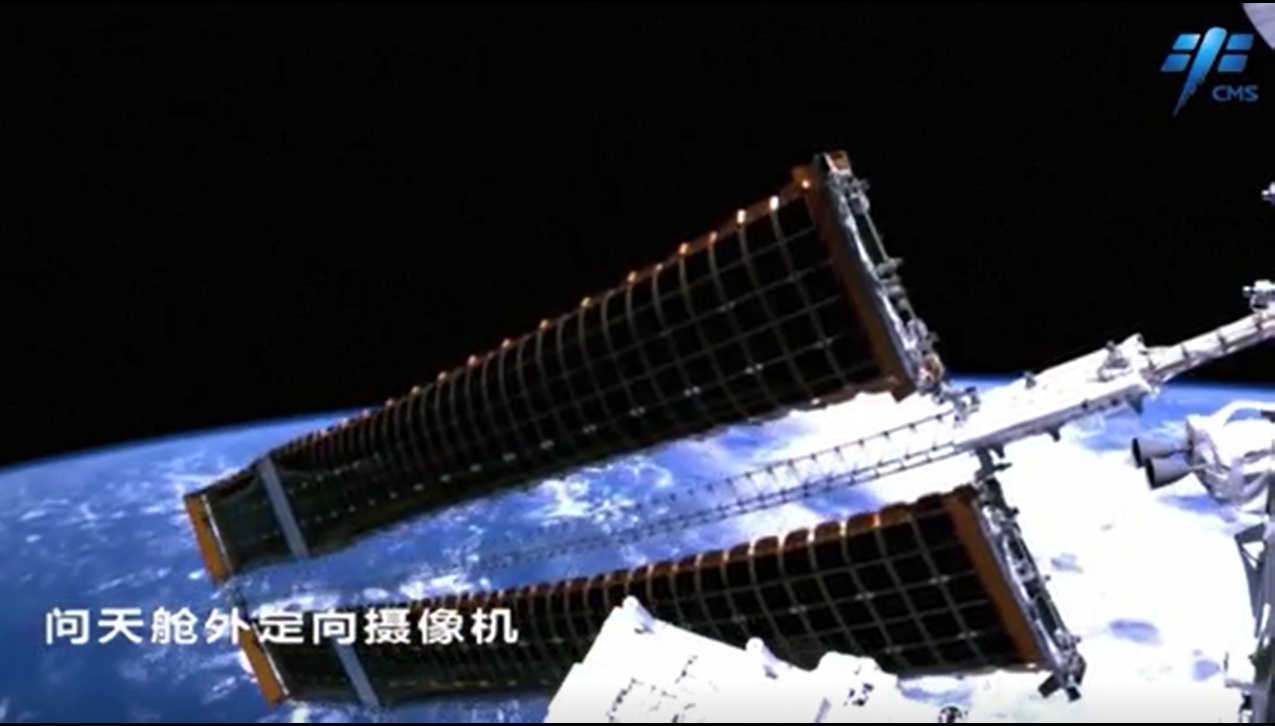See the huge solar wings of China's space station in motion above Earth (video)
China's space station recently gained a new module and with it a pair of huge, solar energy-capturing "wings" that can rotate as the outpost orbits the Earth.
A new video from China's human spaceflight agency, CMSA, shows the large solar arrays rotating around the Tiangong space station as our blue and white planet passes below.
The arrays are part of the Wentian experiment module, which launched in July. The angle of the panels can also be seen to change to face the sun as the Tiangong space station continues along its orbit.
Related: China's Long March rocket family in photos

Wentian's two solar arrays are each nearly 98 feet (30 meters) long. Together they have a total wingspan of over 180 feet (55 meters). Each solar panel has a collecting area of about 1,184 square feet (110 square meters).
China plans to launch a third and final module to Tiangong in October. Called Mengtian, that experiment module will also carry a pair of large solar arrays similar to those of Wentian.
Three Shenzhou 14 mission astronauts—who are currently aboard Tiangong and preparing for a first extravehicular activity, or spacewalk, from the Wentian module—will greet the module.
Get the Space.com Newsletter
Breaking space news, the latest updates on rocket launches, skywatching events and more!
The solar panels are designed to provide power for the Tiangong space station which China plans to keep permanently inhabited by rotating crews of three astronauts for over a decade.
Meanwhile, the older, larger International Space Station has solar arrays with a wingspan of 240 feet (73 meters) to power its activities in orbit.
When completed Tiangong will be around 20% as massive as the International Space Station, which has a mass of about 460 tons.
Follow us on Twitter @Spacedotcom or on Facebook.
Join our Space Forums to keep talking space on the latest missions, night sky and more! And if you have a news tip, correction or comment, let us know at: community@space.com.

Andrew is a freelance space journalist with a focus on reporting on China's rapidly growing space sector. He began writing for Space.com in 2019 and writes for SpaceNews, IEEE Spectrum, National Geographic, Sky & Telescope, New Scientist and others. Andrew first caught the space bug when, as a youngster, he saw Voyager images of other worlds in our solar system for the first time. Away from space, Andrew enjoys trail running in the forests of Finland. You can follow him on Twitter @AJ_FI.









